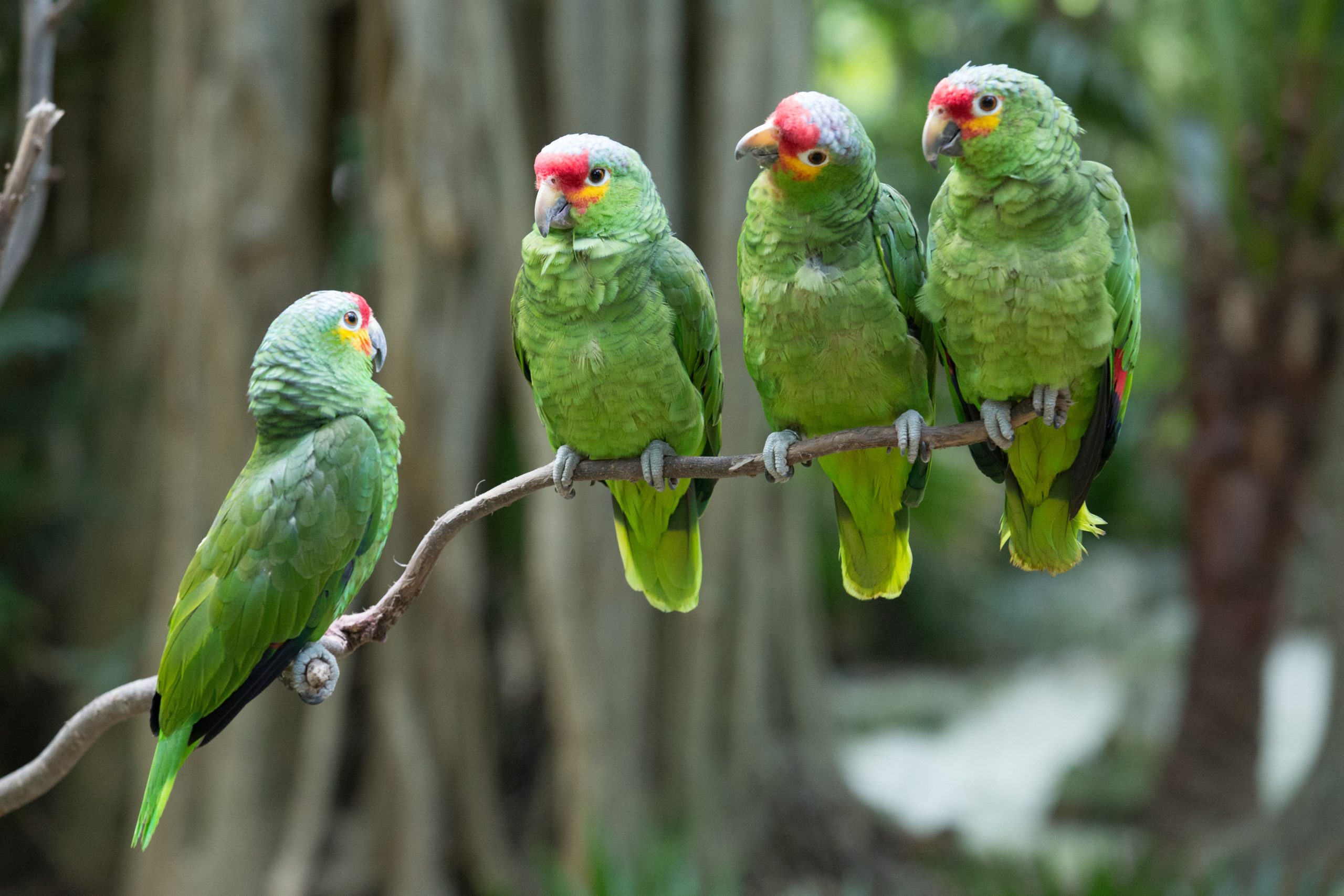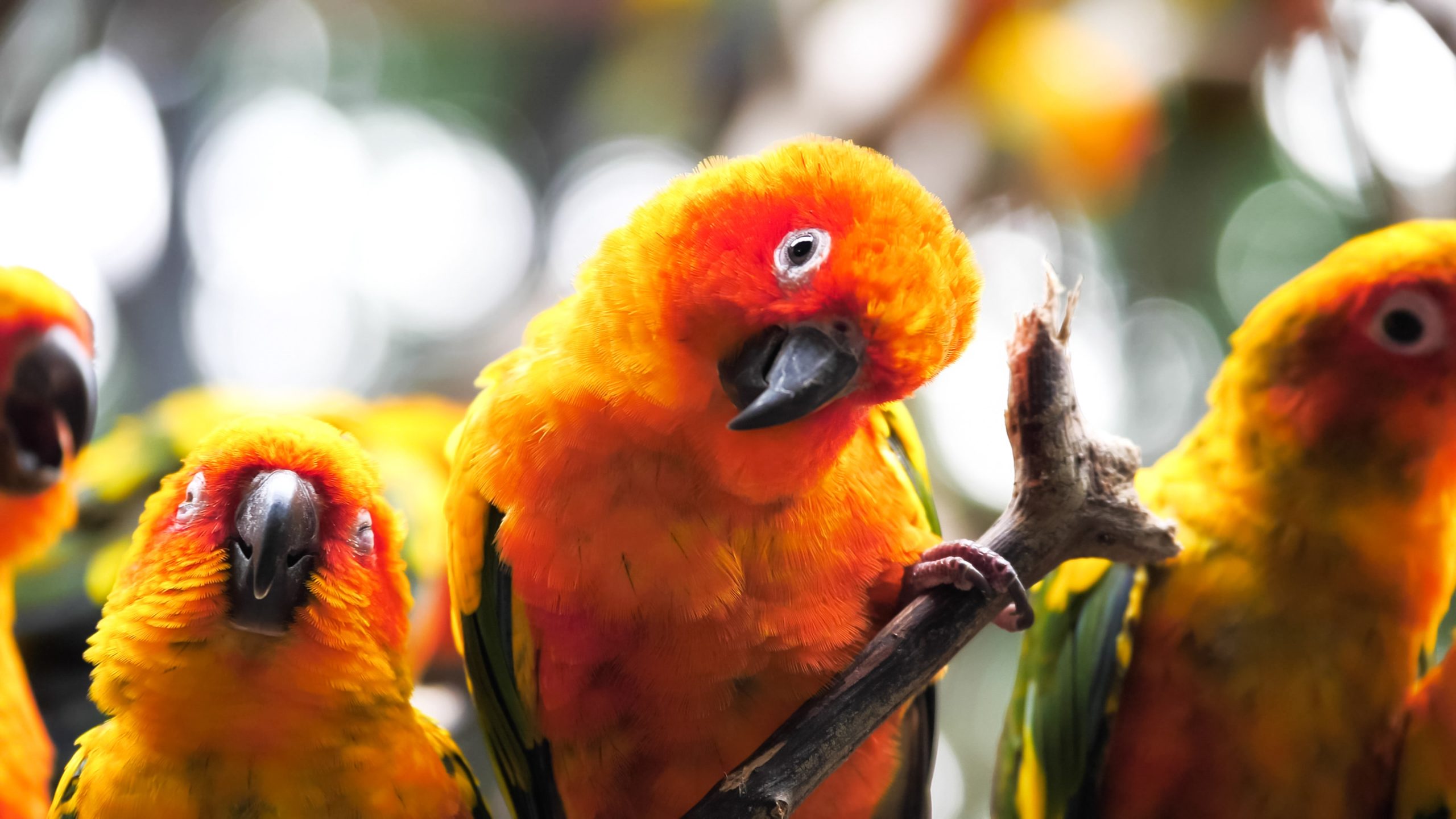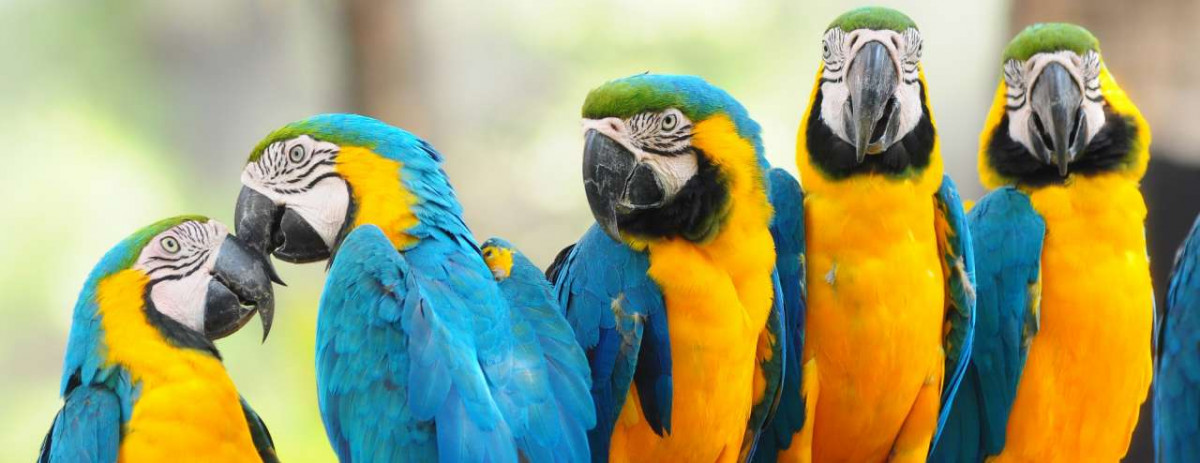The moulting period in birds
The moulting period is a fascinating phase in the life of birds during which they undergo a remarkable transformation. During the molting period, birds undergo a complete renewal of their plumage, a process that is very demanding on their bodies. It is therefore essential to provide extra care and support to your bird during this period.
In this blog we take a closer look at what exactly happens during the moulting period, the impact of the moulting period on your bird's well-being, the dangers involved during this period and most importantly, how you can help your bird during this period without all too much trouble to get through. Discover why the moulting period is so important and learn why providing extra care and attention is crucial to keep your bird healthy and happy during this special phase.
Why do birds molt?
The moulting period is an important phase in the life of birds in which they renew their entire plumage. It is a natural process where old springs are replaced with new ones. This so that they have a completely new and fresh plumage which is optimal and strong again. The moulting period is essential for birds as their feathers are vital to their ability to fly, provide insulation, provide camouflage and are part of their mutual communication.
For migratory birds, the moulting period is crucial, as it gives them the opportunity to optimally prepare their plumage for the long journey to their wintering grounds.
Unlike their wild counterparts, our beloved domestic birds don't have to undertake challenging treks to faraway places. Yet they naturally still undergo the moulting period, because our birds also have to completely renew their plumage to remain in optimal condition.

When do birds go into molt?
The moult occurs after the breeding season, usually in late summer or fall. This is the period when birds are less active and they rely less on their feathers for reproductive and territorial activities.
Most birds go through at least one full molt per year, renewing their entire plumage. The exact length and timing of the molting period can vary between bird species. We see that the moulting period lasts a maximum of 6 weeks with our house birds.
Nature has arranged the moulting process well and the beauty of this is that moulting does not take place simultaneously for all feathers. Birds have a sequential moult, meaning that different parts of the body lose and renew feathers at different times. This ensures that they retain their ability to fly and are not completely featherless.
What impact does the molt have on your bird
The molting period has a significant impact on your bird, both physically and mentally. Renewing all feathers demands a lot from the bird's body and costs a lot of strength, energy and nutrients.
Physically, moulting requires large amounts of nutrients. Feathers mainly consist of proteins and during the moult your bird needs extra proteins to make the new feathers grow healthy and strong.
The moult ensures an increased metabolism. In addition, this process also requires a lot of energy and strength, which results in an increased metabolism in your bird. It is therefore essential to feed your bird a balanced diet rich in nutrients, especially protein, to support it during the moult.
The moulting period has a lot of physical and mental impact on your bird. The body needs a larger amount of nutrients and your bird is more sensitive to stress during this period.
The moult also has an impact on mental well-being. The process of feather renewal can make your bird irritable and restless. You may notice that your bird spends more time preening and grooming its plumage. This is a natural response, as washing the plumage helps remove old feathers and encourages the growth of new feathers.
During the moulting period, your bird is also more sensitive to stress. The loss of old feathers and the growth of new feathers can cause itching and discomfort. This makes your bird more sensitive and less able to deal with stress and changes. It is important to create a calm and stress-free environment to help your bird cope with the physical and mental challenges of the molting period.

Why your bird could use extra help
We cannot stress enough the importance of extra support for your bird during the molting period. We now know that the moulting period is a demanding period where your bird's body works hard to renew its plumage.
One of the challenges during the moulting period is that you do not know in advance how your bird will get through this intensive period. Birds are prey animals and therefore masters at hiding how they feel, they have naturally learned to mask weakness to protect themselves.
This can make it difficult to determine how your bird is really feeling and how it will get through the molting period. You may think your bird is in good shape, but inside it may actually be struggling with the physical and mental challenges involved in renewing its entire plumage.
Prevention is better than cure! We recommend that you always offer your bird extra support during the heavy moulting period. By being proactive and providing the right care, you can ensure that your bird stays healthy and happy during this demanding period.
What does a bird in the moulting period look like?
During the moulting period, birds can show different symptoms. It is important to keep in mind that moulting symptoms can vary between different bird species and individual birds. Not all birds will experience the same degree of discomfort during the moult.
It is not unusual for birds to look a bit unkempt or "picky" during this time. The loss of the feathers can make parts of the bird's body appear bald or have small downy feathers. This is especially true for the head, neck and chest.
During the moulting period, a bird can look unkempt and plucky, and its color can change and appear duller. When a bird is having a hard time moulting, holes and bald spots can appear in its plumage.
In addition, birds can also experience changes in the color of their feathers during the moulting period. Some birds temporarily get a less bright or duller color. This is because new feathers have not yet fully grown and the color has not yet developed optimally.
Moulting is a natural process that can temporarily change your bird's appearance. While your bird may look less "polished" during the molt, its plumage will eventually return to its full glory.

How do you help your bird through the moulting period in a healthy way?
As a bird owner, you can play an important role in supporting your bird during the molting period. By providing proper care and attention, you can help your bird get through this phase smoothly and thrive. Here are some practical tips and products to help your bird during the molting period.
- Offer one balanced diet
- Provide a base complete nutrition
- Support with nutritional supplements of multivitamins
- Give eggfood until after the moulting period
- Spray your bird extra
- Stimulate natural behavior
- Provide a calm environment
One of the most important aspects of support during the molting period is to provide a balanced diet, in the form of a complete nutrition and additional nutritional supplements. Birds need extra nutrients during the moulting period to renew their plumage and to support their bodies in the recovery process. It is advisable to offer foods high in protein and essential fatty acids, as well as supplements specifically designed for birds during the molting period.
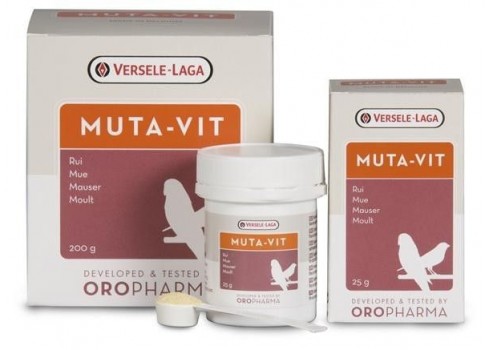
Muta-Vit Vitamin in powder form
Oropharma Muta-Vit is a unique blend of vitamins, amino acids and trace elements with a special focus on sulphurous amino acids and biotin.
This supplement has been specially developed to promote the growth and condition of feathers and to strengthen your bird's plumage.
Thanks to the powerful ingredients it offers Muta Vit essential nutrients your bird needs during the molting period.
Nekton Biotin the ultimate superfood for birds during the moulting period
Nekton Biotin is an easy and effective way to provide your bird with all the necessary nutrients during this important phase. The Nekton Biotin contains a powerful combination of essential vitamins, amino acids, minerals, trace elements and a high concentration of biotin. Biotin is an essential nutrient that plays a crucial role in feather building, as feathers largely consist of biotin.
With daily administration of Nekton Biotin you give your bird the optimal support for a healthy and radiant moulting period.
Powdered multivitamins are better absorbed by birds than drops in the water. This is because water can neutralize the power of vitamins, making it difficult to ensure proper dosage and absorption. Powdered multivitamins are absorbed directly into the bird's body, maximizing their effectiveness and benefits.
Eggfood the Powerboost during the moulting period
During the molting period eggfood a valuable addition to your bird's diet. Eggfood is packed with energy and fats, which is essential for your bird during this intensive period that demands a lot of energy.
Eggfood provides extra nutrients and building materials that are not present in seeds, such as proteins and carbohydrates. These nutrients help your bird build new feathers and support growth and development. By means of eggfood offer, you give your bird an extra boost to get through the moulting period healthy and strong.

De Back Zoo Nature Extreme Mist Maker can be a handy tool to spray your bird with a fine mist during the moulting period. This keeps your bird's skin hydrated. Learn everything in our blog de The Mistmaker is the ideal sprinkler during warm weather
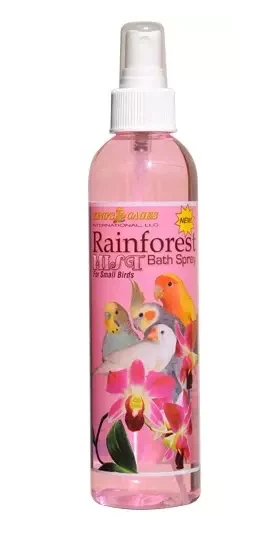
King's Cages Mist Bath Sprays
Renewing the feathers can be an unpleasant feeling for your bird. The new pens have to penetrate the skin and this causes sensitive and itchy skin.
To provide your bird with extra support, you can spray it daily with the King's Cages Mist Bath Sprays. These unique sprays contain Aloe Vera which naturally has a calming effect on the skin.
When you spray your bird daily with the Mist Bath Sprays promotes the growth of new feathers and soothes the skin. This prevents dry and itchy skin.
The danger that comes with the moulting period
During the molting period, your bird's health is at stake. The intensive process of feather renewal requires an enormous amount of energy and nutrients. The body uses all its strength to create the new feathers and this makes your bird weaker and more susceptible to disease during moulting.
During the moulting period, your bird uses a lot of energy and nutrients. This weakens his immune system and makes your bird more vulnerable to illness.
The combination of a weakened immune system and the stress associated with moulting makes your bird vulnerable during this intensive period. It is therefore essential to pay extra attention to the health and well-being of your bird during this period.

Take action during the moult for a healthy and happy bird
The moulting period is a special period in which birds renew their entire plumage to remain healthy and functional. We now also know that this phase requires a lot of energy and strength from a bird and that they are more vulnerable to diseases during this period.
Fortunately, as bird owners, we can do a lot to support our birds during this difficult period. With extra care and attention, you can ensure that your bird has a healthy and happy molting period.
Take the time to learn about your bird's needs during this phase and adjust your feeding and care routine accordingly. Make sure your bird is fed a balanced diet, supplements such as multivitamins and eggfood, sprayed regularly to care for the skin and feathers, and provides a peaceful environment.


